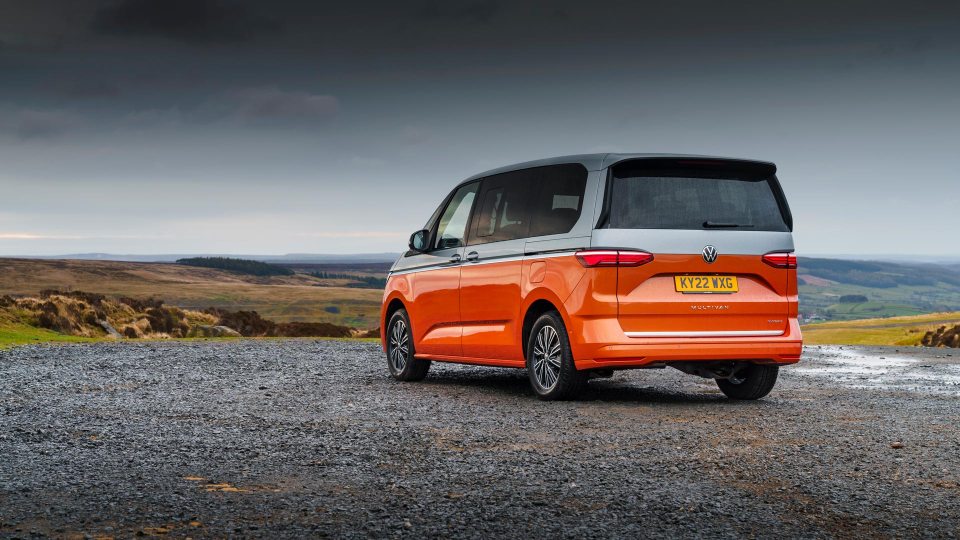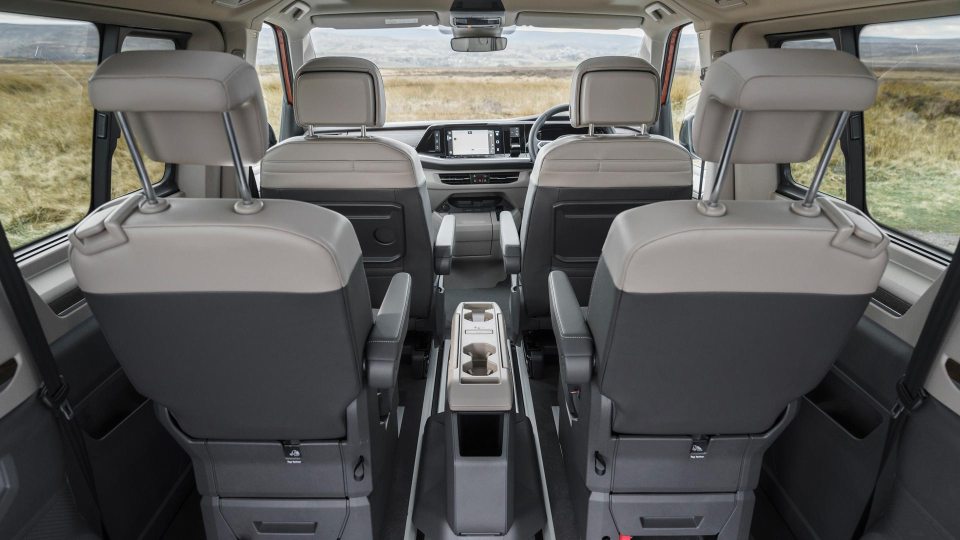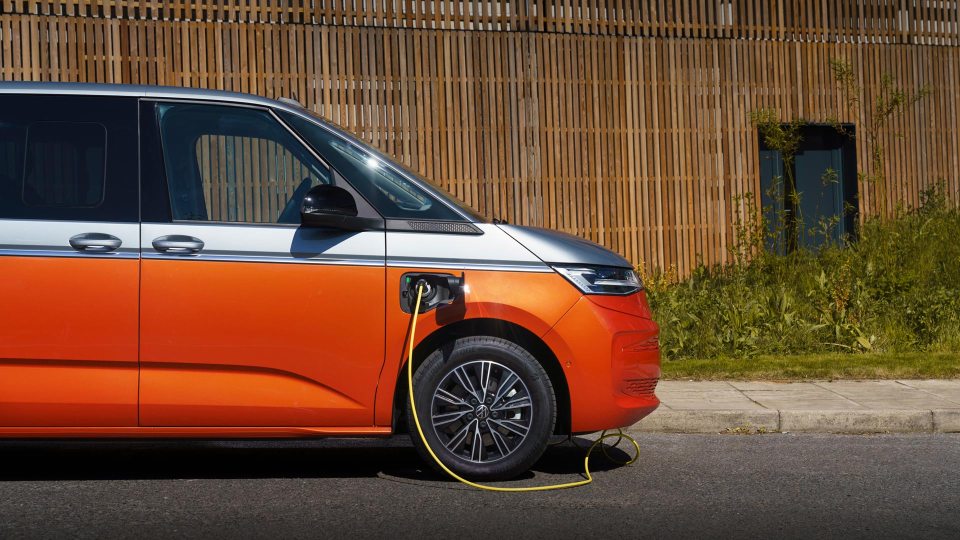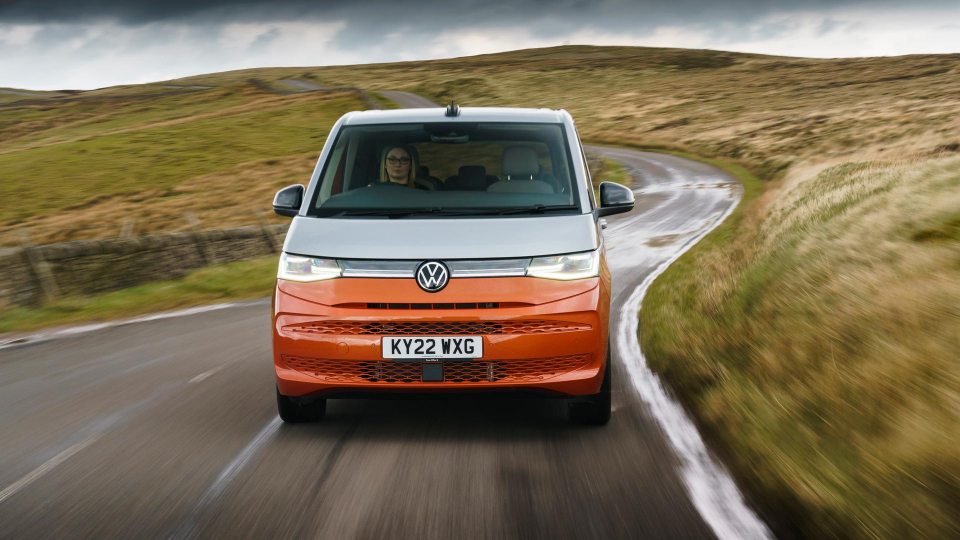Volkswagen Multivan eHybrid review: inner space

Fashion from the 1990s is currently undergoing a resurgence, with cargo trousers, checked shirts and bucket hats back in demand. The decade was also famous for the MPV, or people carrier, which seems just as deserving of a comeback.
The Volkswagen Sharan was a leading MPV in the 1990s, combining curvy styling with a practical interior. The second-generation Sharan has recently ended production, leaving Volkswagen with an MPV-sized gap in its range. Enter the Multivan.
The Multivan replaces both the Sharan and larger, van-derived Caravelle. A shared platform with the Volkswagen Golf means the new model is not van-based, and promises better road manners as a result. It does still look slightly ‘commercial’, though, thanks to sliding doors and slab sides.
Six or seven seats

This is a big car, measuring 4.9 metres in length. The appropriately named ‘Long’ version stretches this to almost 5.2 metres. It’s something to keep in mind when parking, although visibility from the raised seating position is good. Standard parking sensors and a rear-view camera help, too.
The Multivan’s exterior size translates into a cabin that’s as vast as it is practical. Buyers can have six or seven seats, with rails that allow the rear chairs to slide forwards and backwards. All individual seats can be heated and come with Isofix attachments for maximum child-carrying capacity.
Practical features include trays on the backrests, multiple USB-C charging points and pull-out drawers beneath most of the seats. A sliding centre console can be moved throughout the cabin, with integrated cupholders and pop-out tables.
Plug-in and play

With all seats in place, the regular Multivan’s boot space is a mediocre 469 litres – on par with a family crossover. Opting for the Long increases this to a substantial 763 litres: worth considering for those who regularly transport six passengers.
The Multivan’s party piece is being able to remove all the passenger seats, transforming it into a true ‘van with windows’. This sees the standard Multivan able to swallow 3,710 litres of luggage, with the Long boosted to 4,053 litres. It’s a flexibility that most SUVs have no chance of matching.
Volkswagen offers the Multivan with a host of petrol and diesel engines, although the plug-in hybrid we tested makes a lot of sense for many. Combining a 1.4-litre turbocharged petrol engine with an electric motor, it balances economy and real-world performance. A total of 218hp makes the Multivan feel sprightly, with smooth and silent acceleration in EV mode. The Multivan’s handling is best described as composed, and a more sedate attitude works best when driving it.
Scene on screen

Regenerative braking is particularly strong, and helps top up the batteries topped-up without needing to plug in too frequently. Charging the eHybrid’s 10.4 kWh battery from a home wallbox will take just over 3.5 hours, and means a potential range of 30 miles on battery power alone.
Swapping between hybrid and full-electric modes is done via Volkswagen’s infamous multimedia touchscreen. This is responsible for controlling most interior functions, and still manages to frustrate with its complexity. It’s one of the few downsides to the otherwise user-friendly Multivan.
The only other major point of contention is cost. Although the standard Life model comes with most necessary equipment, the pricier Style version boasts niceties like power-closing doors and heated seats. Add options like the fancy two-tone paint seen here, and the price really starts to spiral.
Sliding doors

Look beyond the infotainment system and the price, though, and the Volkswagen Multivan is a brilliant reminder of why MPVs make so much sense. SUVs might be more fashionable, but the sliding doors of the Multivan are portals to a world of endless practicality.
John Redfern writes for Motoring Research
PRICE: From £43,720
POWER: 218hp
0-62MPH: 9.0sec
TOP SPEED: 119mph
FUEL ECONOMY: 156.9mpg
CO2 EMISSIONS: 41g/km